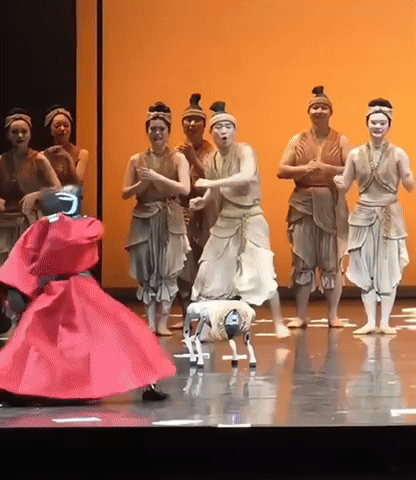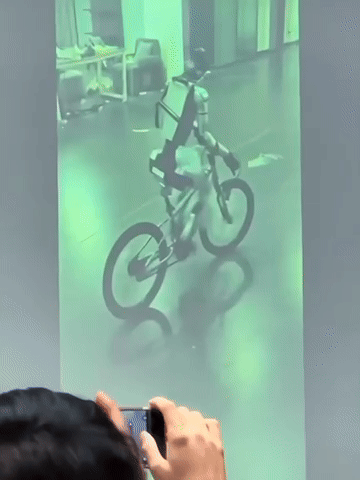Inside China's Robotics Startups – Innovation, Commercialization, and Global Reach
Field notes from Baiguan's China tour
Last week, Baiguan’s very first China tour with a private cohort from around the globe set out to explore China’s consumer and technology names. Robotics is by no means an up-and-coming sector that cannot be ignored. We took the group to visit Deep Robotics, one of the “six little dragons” startups based in Hangzhou—a group of unicorn startups that also includes DeepSeek, Unitree, and Game Science. In today’s newsletter, I’ll share some observations and key takeaways from the tour, as well as insights from my recent visit to Realman, another robotics company based in Beijing.
A unique way Chinese startups are monetizing their humanoid robots
There’s no doubt that robotics—especially humanoid robotics—are capturing attention nowadays. But there are many doubts about how these new startups will fund their innovation, as R&D burns enormous amounts of cash, and finding commercially viable use cases remains challenging.
In China, an interesting and even slightly amusing phenomenon has emerged: entertainment has become the first commercial scenario for monetizing humanoid robots. You may have seen videos of Unitree robots dancing or riding bicycles online—and perhaps criticized that you’d rather see them doing household chores. But in China, humanoid robot performances have already turned into a cash-generating business.
On my high-speed train to Hangzhou two weeks ago, I happened to sit next to someone who owns an entertainment company and a KOL agency. He told me that his company now buys humanoid robots from various startups (believe it or not, there are over 80 humanoid robot brands in China now—soon you’ll see the same brand consolidation and price wars that hit the EV industry). The company leases out robots for live performances—concerts, warm-up shows, marketing events at malls, private parties, and even livestreams for KOLs.
He told me that his company can rent out humanoid robots on a daily basis — effectively turning humanoid robot assets into cash-flow-generating assets. Depending on the specific robot models, the price can range from as low as 5,000 RMB to 20,000 RMB per day, with the price including the wages for technicians and operators to conduct the show.
He said that many other companies are doing the same thing. When humanoid robots first came out, the daily rental was at least 15,000 RMB (~2,100 USD) to 20,000 RMB (~2,810 USD) to get a Unitree robot that could dance. Let’s say you get a Unitree H1 robot — the one that danced at China’s 2024 Spring Festival Gala — which is worth roughly 650,000 RMB (~91,325 USD). You could get your investment back in just around 40 days of rental. According to him, this was easy given the tremendous demand in China, and one could roughly make the money back within three months or even less. However, the once blue-ocean cash-flow business soon turned into a price war, and nowadays the rental cost for a dancing robot has dropped to only around 7,000 RMB (~983 USD) as more players entered the market.
His company is also a key partner in the production of 《天工开物》Tiangong Kaiwu, the very first dance drama featuring traditional Chinese clothing and humanoid robots. Since its premiere, the show has been performed over 100 times in various cities across China and has generated huge buzz on the Internet. Each show is priced at 180 RMB and is rated 9.3/10 on Damai, China’s largest ticketing platform for sports events and live performances.
He used to be in the live-streaming business and had zero tech background — yet somehow became one of the first adopters of humanoid robots.

This reminds me of the recently launched NEO humanoid robot by 1X. Many netizens were hugely disappointed when they realized that the robot is almost entirely remote-controlled by another human — essentially turning it into a 24-hour surveillance camera at home. That’s a big gap between what the commercial portrayed and what the robot can actually do. Training humanoid robots (and you can certainly debate whether humanoid form is even the best solution) for household chores is difficult and lacks sufficient data. There’s still a long way to go before we reach that futuristic dream where robots take care of everything at home.
What I find interesting is that you rarely see humanoid robot companies in China selling products by hyping up a dream that hasn’t arrived yet. Generally speaking, Chinese consumers are quite realistic about what humanoid robots can and cannot do at this stage. Also, a robot like NEO, priced at $20,000, is simply too expensive to find early adopters in China.
Unintentionally, live-streaming and performances have become the first commercially viable use cases to generate cash flow and fund future innovation in China. Instead of selling a dream, companies are iterating products and services in the consumer market in a “not-so-fancy,” or very “接地气 down-to-earth” way. It’s also a unique path that only works in China, given its enormous consumer market — especially among the vast majority living in smaller cities, suburban areas, and rural regions, where humanoid robots still feel futuristic and novel to watch. People pay to see shows like this, even though they know these robots can’t yet do household chores.
Deep Robotics & Realman — how robotics companies are monetizing in real-world scenarios
Beyond humanoid robots, other types—like quadruped robots and robotic arms—are already integrated into real-world settings and delivering enterprise-level solutions.
During the Baiguan China Tour, we had the opportunity to visit Deep Robotics, a leading quadruped robot company based in Hangzhou. The Deep Robotics team believes that robotics will likely first find large-scale applications in industrial environments, as the home is the most complex one to navigate. Their robots are already deployed in real-world scenarios such as power inspection, emergency rescue, and heavy-duty environments like construction sites and metal factories where extreme temperatures are common.
Deep Robotics has recently delivered an advanced power tunnel inspection solution, the self-developed X30 quadruped robot, to Singapore Power Group (SP Group)
When we visited, we also got to see a live demo of their quadruped robots, showcasing their ability to handle difficult terrains and rainy weather.




